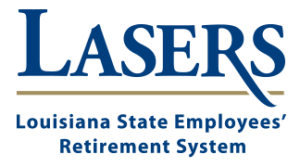HISTORY OF LASERS TECHNOLOGY
In 1946, those LASERS employees who first created the retirement system had no technology to help them calculate retirement benefits, other than paper and ink. Checks were either handwritten or produced on a typewriter and taken to the Post Office for delivery. Envelopes were sealed by using an iron and ironing board. The technological revolution began about the same time as LASERS, but steady growth continued in the 1950s and 1960s, eventually culminating in major breakthroughs such as space flight, mobile phones, Electronic Fund Transfers (EFTs), and the Internet.
Today, LASERS uses the best technology available to help our members enjoy happy and successful retirements. Cloud technologies, Virtual Networking, and Remote Work capabilities allow LASERS staff to offer more information experiences and cutting-edge cybersecurity ensures that member data stays safe and secure.
1940s – early 1970s
- Historical member records stored on microfiche at the Louisiana State Archives.
Late 1970s
- LASERS Payroll was processed by the Division of Administration on an IBM mainframe.
- New enrollments and retirement calculations originally created on punch cards, then progressed to data entry into IBM Mainframe terminal.
1980s
- LASERS created own Information Technology team and began to break away from Division of Administration.
- Moved from IBM Mainframe to new LASERS HP Pension Administration System (PAS), our first computer system.
1990s
- LASERS obtained its first PC and it was shared by staff.
- Began to use first key software such as cc:Mail, WordPerfect, and Lotus 1-2-3.
- In 1993, the first phone system at LASERS was introduced, the Direct-Talk phone system by IBM.
- IBM AS/400 came into use for the JD Edwards financial system; and the IBM Content Manager system was installed to store paper documents digitally for backup purposes.
- Imaging progressed to provide business process workflow based on documents received from members.
- LASERS first website launched.
2000s
- Implementation of Storage Area Networks, Firewalls, blade server technologies, migration to 10 GB network connectivity.
- Migrated from 10 physical servers to a server blade center running over 100 Virtual Servers at many times the computing power with a much smaller footprint.
- Disaster recovery implemented at SunGard.
- The HP PAS computer was retired and replaced during the SOLARIS project, 2006-2008. SOLARIS, the first fully browser-based system, is the current PAS in use today at LASERS.
2010s
- First Member Self-Service system deployed on the Internet in 2008.
- In 2014, JD Edwards completed a major upgrade and moved to the distributed server platform; became the second major business system to be fully browser-based.
- In 2017, AS/400 was replaced by FileNet which ended the need for mainframe and mid-frame style computers; all key business systems now accessible via the browser; marked end of concept of an imaging system for paper documents and introduced the idea of Enterprise Content Management, where all digital information is managed and can be used for workflow processes.
- In 2018, began utilizing Microsoft 365 services to provide email communication; introducing philosophy of working from anywhere, anytime, on any device.
2020s
- During the COVID-19 public health emergency, LASERS operations for the first time were performed nearly 100% with staff working from remote locations (typically from home) with members experiencing no loss of services.
- Member Self-Service was retired in 2020 and replaced with myLASERS, a new member system with enhanced security which includes multi-factor authentication.
